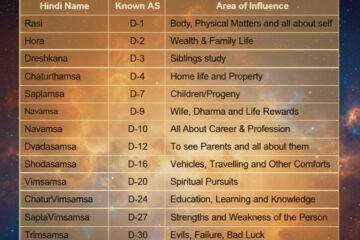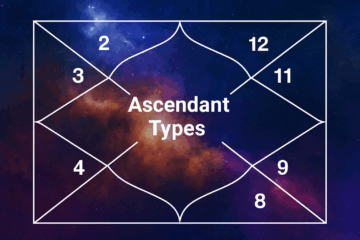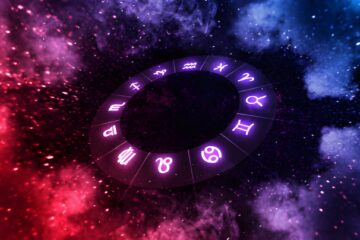When we talk about planetary strength in Vedic astrology, we’re talking about more than “this planet is exalted” or “that planet is in own sign.” Those are important, but they’re not the whole story. Two charts can both have an exalted Mars or a debilitated Jupiter and still live out very different realities. Why? Because actual delivery depends on deeper layers like Avastha (the planet’s state), residential strength in the house, Shadbala (quantitative strength), and Nakshatra resonance. These are the inner conditions that show how alive, stable, and capable a planet really is.
This article continues the dignity discussion and goes further into planetary strength in Vedic astrology. We’ll walk through Baaladi Avastha, house-centered strength (Avasiya Bala), Shadbala’s sixfold score, and Nakshatra-based refinement. We’ll also stitch them together so you don’t get lost in numbers. The goal is not to memorize more jargon. The goal is to train your eye to ask: “Can this planet actually do its job in this chart, in real life, in real time?”
If you feel a little overwhelmed by layers, that’s normal. Jyotish is built like an instrument panel. You’ll learn to read it with practice. Don’t panic at any single factor. Always synthesize before you judge a planet to be “good” or “ruined.”
Baaladi Avastha: Understanding Planetary Vitality by Degree
Avasthas are planetary “states,” and one of the first to learn is Baaladi Avastha. This describes the maturity or vitality of a planet based on its degree within a sign. Think of it as: Is this planet acting like an infant, a teenager, an adult at full power, or something older and more withdrawn?
In Baaladi Avastha, the zodiac is read in segments. The logic is different for odd and even signs. For planets in odd signs (Aries, Gemini, Leo, Libra, Sagittarius, Aquarius):
- 0–6°: Infant stage — raw, undeveloped, easily overwhelmed. Minimal delivery.
- 6–12°: Adolescent stage — partial delivery, building confidence, not yet steady.
- 12–18°: Mature stage — full expression. The planet knows itself and acts clearly.
- 18–24°: Old stage — fatigue, conservative output, guarded results.
- 24–30°: Near-death stage — the planet withdraws its force; expression becomes limited.
For even signs (Taurus, Cancer, Virgo, Scorpio, Capricorn, Pisces), the sequence reverses:
- 0–6°: Near-death stage — minimal outward vitality.
- 6–12°: Old stage — cautious, muted delivery.
- 12–18°: Mature stage — maximum clarity and power.
- 18–24°: Adolescent stage — some strength, some wobble, often expressive but uneven.
- 24–30°: Infant stage — immature, experimental, can misfire or act naively.
Don’t treat these labels literally (“my planet is dying”). Baaladi Avastha is symbolic. The deeper point is this: a planet placed near the middle of a sign (around 15°) tends to be most fully immersed in that sign’s flavor. It can act with clarity. A planet near the edges of the sign (1°, 29°) is carrying transitional energy — it is not settled, it’s blending into what came before or what comes next. That transitional quality weakens precision.
This matters for planetary strength in Vedic astrology because it helps you answer questions like: “Yes, Venus is exalted. But is it acting with mature stability, or does it behave like an overwhelmed child?” Baaladi Avastha gives you temperament, not just title.
One more nuance: Avasthas on their own do not override everything else. A planet with a “young” Avastha but excellent dignity (own sign or Mooltrikona), strong Shadbala, and benefic aspects can still perform beautifully. You never isolate one layer and declare fate. Jyotish is about repetition and agreement between layers.
Residential Strength (Avasiya Bala): Can the Planet Act in This House?
Next layer of planetary strength in Vedic astrology: is the planet actually controlling the house it sits in, or is it weakly present? Residential strength (often described as Avasiya Bala) answers that.
Here’s the logic. The Ascendant (Lagna) has an exact degree at birth — say, 20° Capricorn rising. That degree becomes like a “house anchor,” and each house will have a corresponding central point (bhaav madhya). In this example, the 2nd house center will be ~20° Aquarius, the 3rd ~20° Pisces, and so on. That central degree in each house is where that house is most “itself.”
When a planet sits close to the center of a house — roughly within about 5° either side of that bhaav madhya — its ability to express that house’s significations is maximal. In other words, that planet can strongly deliver the affairs of that house. We consider it to have high residential strength there.
If the planet sits far from the house center or is hugging an early degree that might still belong to the previous house in a Bhava Chalit system, its grip on that house weakens. This is where you have to respect Bhava Chalit (house-based placement) instead of only looking at sign-based D1/Rasi placements. A planet at 2° Aquarius may actually still be operating in the 1st house if the Ascendant is at 20° Capricorn. You can’t assume “Aquarius sign = 2nd house” without checking the actual house cusp math.
Practical takeaway:
- A planet near the center of a house can “speak loudly” for that house in real life.
- A planet floating way off the house center may show up more as background color than as a strong agent.
- Residential strength is about how effectively a planet delivers house results. It’s not just dignity; it’s leverage.
This is huge for prediction. You may see a planet that looks weak by Baaladi Avastha (immature stage) but sits almost exactly on the midpoint of the 10th house. That person may still have a very activated career story because residential strength is high. The planet might act like a young executive — not fully refined, but undeniably influential.
Shadbala: The Sixfold Quantitative Strength
Shadbala literally means “six strengths.” It is a mathematical system that tries to quantify planetary strength in Vedic astrology. In Shadbala, each planet is measured across multiple categories such as positional strength, directional strength, temporal strength, motion-based strength, natural brilliance, and a set of sub-factors that, altogether, can run into dozens of tiny calculations.
The end result is expressed in Rupas (1 Rupa = 60 Virupas). Each planet has a classical minimum requirement. For example, the Moon needs around 6 Rupas, Mercury needs around 7 Rupas, Saturn needs its own threshold, and so on. If Mercury ends up at 8 Rupas, that means Mercury is operating above its minimum quota — it’s effectively above 100% of required capability. We would then say Mercury is capable, empowered, and mechanically strong in that chart.
What Shadbala is telling you is: “How much raw horsepower does this planet have to act?” That’s different from “Will it act pleasantly?” A high Shadbala Saturn that is also a functional malefic for the Lagna can produce intense pressure, duty, delay, and karmic lessons with enormous force. A planet with very high Shadbala can deliver both blessings and challenges powerfully — depending on its dignity, aspects, combustion, house rulerships, and yogas.
Important reminders when using Shadbala:
- Shadbala is capacity, not morality. It shows how forcefully a planet can operate, not whether it likes you.
- If a planet’s Shadbala is extremely low, it may struggle to deliver any of its promises unless other supports (yogas, benefic aspects, vargottama repetition across divisional charts) rescue it.
- Modern software (like JHora) computes Shadbala instantly. Use that as a reference, but don’t let a single number overrule context. Always check functional nature: is the planet a yoga karaka or a maraka? Is it combust? Is it retrograde? Is it receiving blessing from benefics?
In other words, Shadbala is necessary information, but never sufficient by itself. It’s one dial on the dashboard of planetary strength in Vedic astrology.
Nakshatra Placement: Subtle Resonance and Mental Tone
Each sign is divided into Nakshatras — 27 lunar constellations, each 13°20′. The Nakshatra lord colors the way a planet thinks, expresses motive, and processes desire. This is where we start to read the psychology and spiritual flavor of a planet.
The Moon’s Nakshatra at birth is called the Janma Nakshatra. Now, watch how other planets line up relative to that Nakshatra. Classical teaching holds that some relative Nakshatra distances indicate harmony (support), some indicate challenge, some are neutral. One practical mapping used by many teachers goes like this:
- Planets in Nakshatras 2nd, 6th, or 9th from the Moon’s Nakshatra: stronger, more auspicious, more aligned with the emotional current of the life.
- Planets in Nakshatras 1st, 4th, or 8th from the Moon’s Nakshatra: neutral to mildly positive, cooperative enough.
- Planets in Nakshatras 3rd, 5th, or 7th from the Moon’s Nakshatra: weaker, more friction, more internal struggle to express clearly.
The intuition behind this is resonance: is the mind (the Moon’s Nakshatra) in sync with what that planet wants to do? If yes, the planet expresses more smoothly in its dashas. If no, it may still act, but with emotional drag, self-doubt, or misalignment.
Where does Nakshatra fit in the hierarchy of planetary strength in Vedic astrology?
- Rashi (sign placement) and house placement set the physical/manifest context. That’s always first.
- Navamsa (D9) refines the soul-level, dharmic, or relational maturity of that planet.
- Nakshatra fine-tunes motivation, tone, and mental pattern. It’s like asking, “What flavor is the delivery?”
So if a planet is dignified in sign, strong by Shadbala, and close to the house center (good residential strength), but its Nakshatra is in friction with the Moon’s Nakshatra, that planet can still deliver results — but the person may feel inner resistance, anxiety, or emotional cost while living those results.
Putting It Together: Layered Power, Not One-Switch Power
At this point, you can see the recurring theme in serious Jyotish: no single factor decides destiny. This is especially true for planetary strength in Vedic astrology. You need to read all layers together:
- Avastha (Baaladi Avastha): Is the planet acting like an infant, a mature adult, or something tired and conservative?
- Residential strength (Avasiya Bala): Is this planet actually in control of the house it sits in, close to the house’s center, or sitting off to the side?
- Shadbala: Does the planet have quantitative horsepower, enough raw capability to act during its dasha?
- Nakshatra context: Is the planet emotionally and psychologically in sync with the Moon’s wavelength, or will it deliver results through inner friction?
- Dignity and rulership: Is it exalted, own sign, Mooltrikona, or fallen? Is it a yoga karaka or a functional malefic for this Lagna?
- Aspects and combustion: Is it protected by benefic aspects, crushed by malefics, or combust by the Sun?
- Repetition across charts: Does D1 promise it, and does D9 (or D10 for career) repeat that promise? Repetition = confirmation.
When multiple layers agree, that’s when you trust a theme. When only one layer shouts and the others are quiet, that’s when you slow down. This is where ethics enter. We don’t fearmonger because Mars is in an “old” Avastha. We ask: What does Mars rule? Where does Mars sit? How strong is its Shadbala? Is Mars vargottama? Is Mars supported by Jupiter? What dasha is active?
The mature astrologer reads synthesis, not headlines.
Important Notes
Is Residential Strength the same as Sthana Bala?
They’re related but not identical. Sthana Bala is a part of Shadbala (the sixfold quantified strength), and it measures positional strength using classical sub-components. Residential strength — the planet being close to the exact bhaav madhya of a house — is about leverage over that house’s affairs. One is mathematical and baked into Shadbala; the other is spatial, predictive, and very practical for house outcomes. Use both.
Do planets hit harder when they transit back to their natal position?
Yes, especially if that planet’s Mahadasha or Antardasha is active. When a slow planet like Saturn or Jupiter returns to its natal degree, it reactivates its original promise. You’ll often feel a surge of the planet’s agenda: lessons, opportunities, confrontations, breakthroughs. But remember: dashas propose, transits dispose. Transit alone can’t manufacture what the natal chart never promised.
How do we read an exalted planet that’s “old” or “near-death” in Avastha terms?
Exaltation shows very high dignity (the planet is in a sign that supports its nature). An “old” or “near-death” Avastha shows that its outward vitality may be low. Put simply: the planet is wise and capable but may operate in a more reserved, less showy way. You might get mature, stable, quietly powerful results rather than loud fireworks. Always verify with Shadbala, aspects, and house rulership before assuming it’s weak.
Can Shadbala alone tell me if a planet will give good results?
No. Shadbala measures how strong the engine is, not whether it’s pointed at a wall. A planet with very high Shadbala that’s also a functional malefic or sitting in Marana Karaka Sthana can act forcefully in a painful way. A planet with only moderate Shadbala but gorgeous dignity and benefic aspects can bless gently and consistently. Capacity is not kindness.
Does a planet’s Avastha change during life?
No. A planet’s Baaladi Avastha at birth is fixed. It’s part of your karmic blueprint. What changes is activation. Different dashas and transits “turn on” that planet at different life stages, so you experience different facets of it. But the Avastha label (infant, mature, old, etc.) itself is a natal constant.
FAQ
How do I reconcile a weak Avastha with very high residential strength?
Think of it like this: a young or unrefined planet (infant Avastha) sitting right on the center of a powerful house can still dominate that life area. The house will speak loudly in that person’s life — it’s just that the expression may feel immature at first. Over time, especially under the planet’s dasha, that area of life gets “lived into,” and maturity can develop through experience. This is why we don’t doom-interpret early-stage Avasthas. We treat them as growth indicators.
Are Nakshatras more important than Rashi?
No. Rashi placement and house placement come first. Nakshatra adds nuance — motive, psychological tone, spiritual texture. You need Nakshatra to understand how the planet expresses itself, but you still read dignity, functional nature, and lordship first. Classical practice: Rashi is the body, Nakshatra is the voice, Navamsa is the soul.
What happens if a planet is vargottama but at a “weak” degree?
A vargottama planet occupies the same sign in the birth chart and in the Navamsa (D9). That repetition locks in the sign’s nature across planes. Vargottama strongly stabilizes identity for that planet. So even if the degree is early or late (which Baaladi Avastha might call less vital), vargottama can rescue or steady it. Many traditional teachers consider vargottama a major form of protection, especially for benefics.
What about combustion? Can a combust but exalted planet still work?
Combustion means the planet is too close to the Sun and loses visible autonomy. But context matters. If the planet is exalted, in own sign, retrograde, or otherwise strong, combustion may purify the expression rather than destroy it. Mercury and Venus are so often near the Sun that charts frequently function just fine with them combust. We judge combustion case by case: dignity, retrogression, time of birth (day vs night), and aspects from benefics all matter.
Can a planet in Marana Karaka Sthana still help me?
Marana Karaka Sthana is where a planet feels uncomfortable performing its natural job (for example, Mars in the 7th, or Moon in the 8th, depending on the school). That discomfort often shows as stress in that area of life. But it does not erase the planet’s ability to do good elsewhere. If that same planet rules powerful houses (Kendra + Trikona = yoga karaka territory), forms Raja Yogas, or has high Shadbala plus benefic support, it will still deliver meaningful results. The discomfort is localized, not total doom.
Stay With Much Needed Astro
Much Needed Astro is here to help you read planetary strength in Vedic astrology the way working astrologers actually do it — not just “exalted = good, debilitated = bad,” but layered synthesis. We teach you to blend Avastha, Shadbala, residential strength, Nakshatra tone, dignity, and timing so you can tell which planets will really act in a chart and when.
If you’re serious about studying real Jyotish, stay with Much Needed Astro — no fluff, no fear-mongering, just clarity you can actually use.



